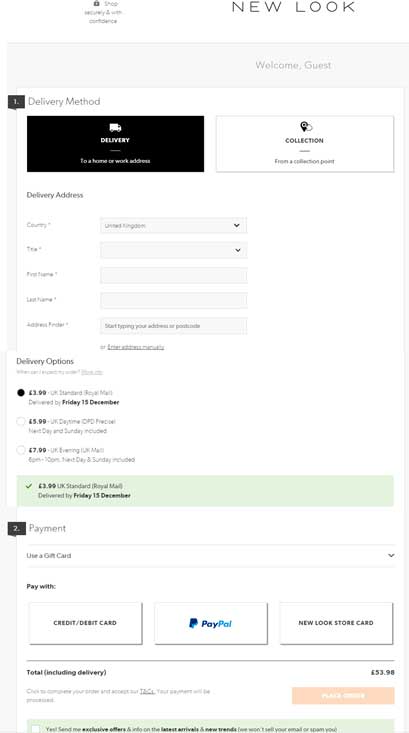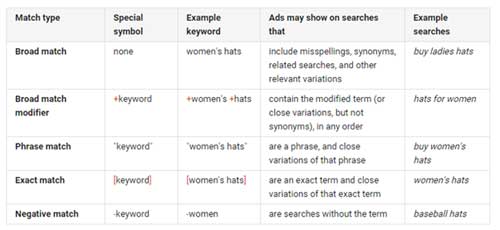
The demand for an exceptional shopping experience has never been higher from customers; more businesses than ever are pushing above and beyond to deliver a streamlined path to purchase. With the battle for customers becoming ever-more competitive, failing to meet their expectations will simply encourage them to take their business elsewhere.
Whether you’re failing to attract new or repeat purchases, the loss of a customer can be devastating; especially when it’s to your competitors. Although it might seem impossible, you stand a good chance of regaining those losses by identifying and rectifying the causes. With this in mind, here are five simple strategies you can implement to drive customers to your website, and keep them coming back to you instead of your competitors:
Target Low Hanging Fruit Keywords
If your business has an e-commerce website, driving traffic that will eventually convert into purchases is essential. However, you can only receive traffic if you’re discoverable. Considering the first organic listing in Google will receive 37% of traffic; with second and third positions generating 18% and 12% respectively, ensuring that you’re ranking above competitors for relevant keywords could make all the difference to your website’s conversions, click through rate (CTR) and, ultimately, sales.
When deciding which keywords to target, it’s easy to assume that focusing your search engine optimisation (SEO) and linking building efforts on keywords you don’t currently rank for which have the highest search volume will generate the best return on investment (ROI). Although this might be an efficient long-term strategy, the benefits won’t be immediate, especially if the keywords are competitive, for your efforts will constantly be up against broader websites also trying to rank in first position. How can you generate quick results whilst working on your rankings for long-term keywords?
Low-hanging fruit keywords are phrases which are already positioned in the ‘sweet spot’ (i.e. positions 5-15) in a search engine results page (SERP). Targeting these search terms is one of fastest and most cost-effective ways to increase traffic to your site with minimal effort, for you are able to spend less money focused on improving your position for these keywords and reinvest your marketing budget elsewhere.

In the above example, a business owner has pulled a report in Google Search Console to pinpoint which search queries are driving traffic, clicks and impressions (how many times people view a listing in the search results). As you can see in the example (which has been sorted by monthly impressions), several of their webpage rankings were discovered to be ‘hanging’ at the bottom of the first SERP for high-impression keywords.
For example, the keyword ’presents for men’ has 48,155 monthly impressions – that’s a considerable number of potential customers! Unfortunately, being in position 7 for this keyword has caused them to receive a mere 26 clicks.
By targeting keywords like this, which are already ranking in positions 5-15 for in the SERP, this business could start to quickly generate traffic, clicks and sales through these quick wins.
Provide Multi-channel Support
Every consumer is different, meaning they will have favoured methods of contacting you. At any point throughout their path to purchase, a potential customer might decide to contact you; whether it’s via submitting a form, sending a direct email or picking up the phone, but how can they do this if you’re unresponsive or your contact avenues are sparse?
Response times can make or break your business. A recent study found that 41% of consumers expect an e-mail response within six hours and yet only 36% of retailers actually respond that quickly. If you aren’t responding to or acknowledging enquiries promptly, what is to stop your customers from contacting one of your competitors instead?
Being reachable through multiple channels is crucial for delivering outstanding customer service. Contact forums are a great way to receive further clarification on a user’s request to ensure you have enough information to help them, for example by using their preferred contact methods and the services or department they are interested in.
Live chats can be useful for assisting customers who are wanting to obtain information – they are already on your website and are ready to take the next actionable step, such as purchasing a product. Implementing a ‘request a call back’ system for customers who prefer to use the phone to avoid long hold waiting times is a popular option with both businesses and customers. If you’re highly active on social media, then responding promptly to enquiries or complaints is essential for maintaining your business’ reputation as one that values their customers, in fact – responding to customers on social media can increase customer advocacy by as much as 25%.
Improve Loading Speed for Target Keyword Landing Pages
Whether it’s for researching a brand or making a purchase, consumers will be drawn to the most user-friendly website that enables them to fulfil their desired action. If you are targeting keywords with the goal of improving your search rankings, then optimising the landing pages for these specific keywords to provide a streamlined user experience is essential. Discounting the importance of optimising these pages based on search demand could cause a high bounce rate (users visiting a website and then leaving without viewing another page) and possibly even a Google penalty, which will dramatically affect your site’s rankings.
It is estimated that 47% of website visitors expect a loading time of less than two seconds and 40% will actually leave the website if it takes longer than three seconds. If your website’s speed isn’t keeping up with that of your competitors, then it will likely be overlooked by consumers, causing you to lose out on valuable enquiries and sales.

For example, let’s say an online dress retailer was in first position for the keyword ’dresses’ and a visitor decided to click the first result. Unfortunately, because their homepage has an extremely slow loading speed (see above) compared to the site’s other pages, the visitor decided to leave the site and look elsewhere. If this were to happen time and time again, it would significantly affect the retailer’s online conversion rate, and would ultimately leave their efforts invested on reaching first position for this keyword wasted. If there are several issues with your website that are affecting your loading speed, fixing them can be an extremely costly process, meaning a loan might be required. You can look into a small business loan to determine how much you might be able to borrow.
Streamline Your Checkout Process
As the popularity of online shopping continues to grow, businesses with ecommerce websites are being put into extremely advantageous positions, as providing a wider variety and the overall convenience means consumers are turning away from the high street in favour of technology. Last year, online retail sales reached an estimated £133 billion – an increase of £18 billion year-on-year. However, this overwhelming demand can spell disaster for businesses who are failing to streamline their checkout process.
Research shows that every extra page that requires data input from a potential customer is another step towards them abandoning their shopping cart altogether. I in fact – 27% of consumers will give up on a purchase if the checkout process is too time-consuming and/or over-complicated. Although multi-page checkouts which ask customers to answer several questions and fill in forms will provide you with useful information, it will simply cause frustration for your customers and drive them towards your competitors instead.
An effectively optimised checkout process should only consist of three to five steps – the shorter the better. Remember – if you are trying to minimise your checkout process, avoid filling one step with too many fields, as this is also off-putting. Including a trail or numbering the steps (e.g. Basket -> Delivery Info -> Payment -> Confirmation) will further reduce the risk of cart abandonment because consumers want to be reassured that they’re not stuck in an infinite avenue of checkout stages.

New Look have streamlined their checkout process by numbering each of the steps. They have also allowed the customer to checkout as a guest, with the option of creating an account and saving their delivery and payment information after they have placed their order. Forcing potential customers into creating an account before they’ve completed a purchase removes their element of choice – not all customers want their personal information to be stored on your database.
Review Your PPC Campaigns for Broad Match Keywords
Over the years pay-per-click (PPC) advertising has transformed how businesses can promote their product or service on a search engine. However, a PPC campaign will only generate a ROI if you’re bidding on the right keywords.
Although broad match keywords might appear to be the most sensible choice for bidding as they carry the highest search volume, sadly they will not generate the best conversions or click-through rate CTR for your website. Yes, these keywords are selected on AdWords by default, but this certainly doesn’t mean they should be your primary focus. If a potential customer considers your website to be irrelevant to a high search volume keyword, they will simply try elsewhere; leaving you with nothing more than a high bounce rate.
If you are currently bidding on broad match keywords, look into reviewing your campaigns to uncover more profitable bidding opportunities. Check whether they are actually generating conversions. Once you have this information available, you can begin to remove under-performing keywords and focus your paid search budget on keywords that will drive a ROI. Remember – you might see a decline in traffic afterwards, however the wrong type of traffic is unlikely to turn into a conversion. The more targeted your traffic is the higher your conversion rate will be.

Above is an example of the different keywords from Google. It is believed that an exact match with a smaller search volume will generate fewer clicks, however, if you’re targeting a smaller niche with limited competition, and your campaigns are optimised effectively, imagine the potential sales you could be receiving.
About the Author
Rafferty Gifford is a Digital Marketing Professional at Liberis.




